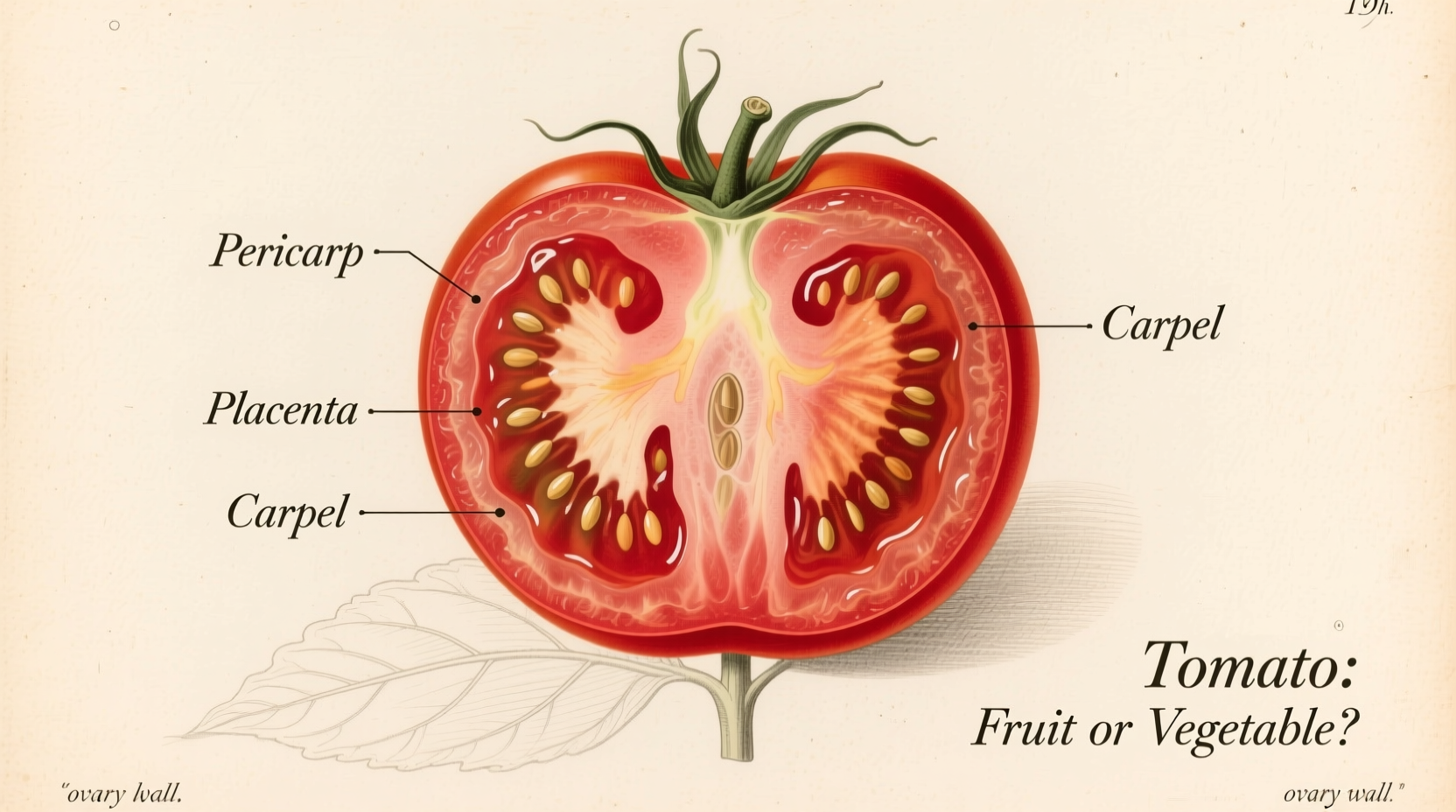Tomatoes are botanically classified as fruits but culinarily treated as vegetables. This dual identity stems from scientific definition versus practical kitchen usage, with a landmark 1893 US Supreme Court decision cementing their vegetable status for trade purposes. Understanding this distinction helps home cooks and food enthusiasts navigate recipes, nutrition facts, and gardening practices more effectively.
The Botanical Reality: Why Tomatoes Are Scientifically Fruits
From a strict botanical perspective, tomatoes unquestionably qualify as fruits. In plant biology, a fruit develops from the ovary of a flowering plant and contains seeds. Tomatoes form from the ripened ovary of the tomato flower and house numerous seeds within their fleshy interior—meeting the precise scientific definition of a berry-type fruit.
This botanical classification places tomatoes alongside other commonly misunderstood produce items like cucumbers, peppers, and eggplants. All these "vegetables" in culinary terms are technically fruits because they develop from flowers and contain seeds. The confusion arises because our everyday language separates "fruits" (typically sweet) from "vegetables" (typically savory), while science uses purely structural criteria.
| Classification Type | Defining Characteristics | Tomato Qualification |
|---|---|---|
| Botanical Fruit | Develops from flower ovary, contains seeds | Fully qualifies (berry-type fruit) |
| Culinary Vegetable | Savory flavor profile, used in main dishes | Commonly prepared and served as vegetable |
| Nutritional Category | Low sugar, high lycopene and vitamin C | Grouped with vegetables for dietary guidelines |
Historical Turning Point: The Supreme Court Decision
The tomato's vegetable designation entered American legal tradition through Nix v. Hedden (1893), a landmark US Supreme Court case. At the time, US tariff laws imposed duties on imported vegetables but not fruits. When tomato importer John Nix argued tomatoes should be classified as fruits to avoid the 10% vegetable tariff, the Court unanimously disagreed.
Justice Horace Gray's written opinion clarified: "Botanically speaking, tomatoes are the fruit of a vine, just as are cucumbers, squashes, beans, and peas. But in the common language of the people... all these are vegetables, which are grown in kitchen gardens, and are usually served at dinner in, with, or after the soup, fish, or meats, which constitute the principal part of the repast." This ruling established that culinary usage, not botanical accuracy, determines legal classification.

Why Culinary Tradition Treats Tomatoes as Vegetables
Chefs and home cooks consistently categorize tomatoes as vegetables due to their flavor profile and culinary applications. Unlike sweet fruits typically served as desserts or snacks, tomatoes feature:
- Savory umami characteristics rather than pronounced sweetness
- Common use in salads, sauces, and main dishes rather than desserts
- Preparation methods aligning with vegetables (roasting, grilling, sautéing)
- Flavor compatibility with herbs and ingredients used for vegetables
Nutritionally, tomatoes behave more like vegetables in dietary guidelines. The USDA's MyPlate system places tomatoes in the vegetable group due to their low sugar content (approximately 2.6g per 100g) compared to typical fruits (often 10g+ per 100g). Their exceptional lycopene content—a powerful antioxidant more abundant in cooked tomatoes—further aligns them with vegetable-based nutrition profiles.
Practical Implications for Home Cooks
Understanding this classification duality offers practical kitchen advantages:
Gardening considerations: As fruiting plants, tomatoes require similar care to other fruit-bearing plants—consistent watering, support structures, and attention to flowering cycles. Their botanical fruit classification explains why they're susceptible to similar pests and diseases as other nightshade family fruits like eggplants.
Cooking applications: Recognizing tomatoes' vegetable status in culinary contexts helps anticipate flavor pairings. Their acidity balances well with other vegetables in sauces and stews, while their moisture content affects dish texture differently than sweet fruits would.
Nutritional planning: When tracking food groups, count tomatoes toward your vegetable intake. The American Heart Association recommends treating tomatoes as vegetables for dietary purposes due to their nutrient profile and typical consumption patterns.
Common Misconceptions Clarified
"If tomatoes are fruits, why aren't they sweet?" Fruit classification depends on plant structure, not taste. Many botanical fruits (like lemons or olives) aren't sweet.
"Does this mean ketchup counts as a vegetable serving?" While tomatoes are vegetables culinarily, processed forms like ketchup contain added sugar and minimal tomato content, so they don't qualify as vegetable servings in nutritional guidelines.
"Are there other fruits commonly mistaken for vegetables?" Yes—zucchini, pumpkins, and avocados are all botanical fruits treated as vegetables in culinary contexts. The reverse also occurs: rhubarb is a vegetable often prepared as a fruit.
When Classification Actually Matters
The fruit-vegetable distinction becomes practically significant in specific contexts:
- Seed saving: Gardeners preserving heirloom varieties must treat tomatoes as fruits, harvesting seeds from fully ripe specimens
- Food preservation: Their acidity (pH 4.3-4.9) allows tomatoes to be water-bath canned like fruits, unlike most vegetables requiring pressure canning
- Nutrition labeling: Food manufacturers must follow FDA guidelines that classify tomatoes as vegetables for dietary labeling purposes
- Agricultural policies: Farm subsidies and trade regulations often follow the culinary classification established in Nix v. Hedden











 浙公网安备
33010002000092号
浙公网安备
33010002000092号 浙B2-20120091-4
浙B2-20120091-4